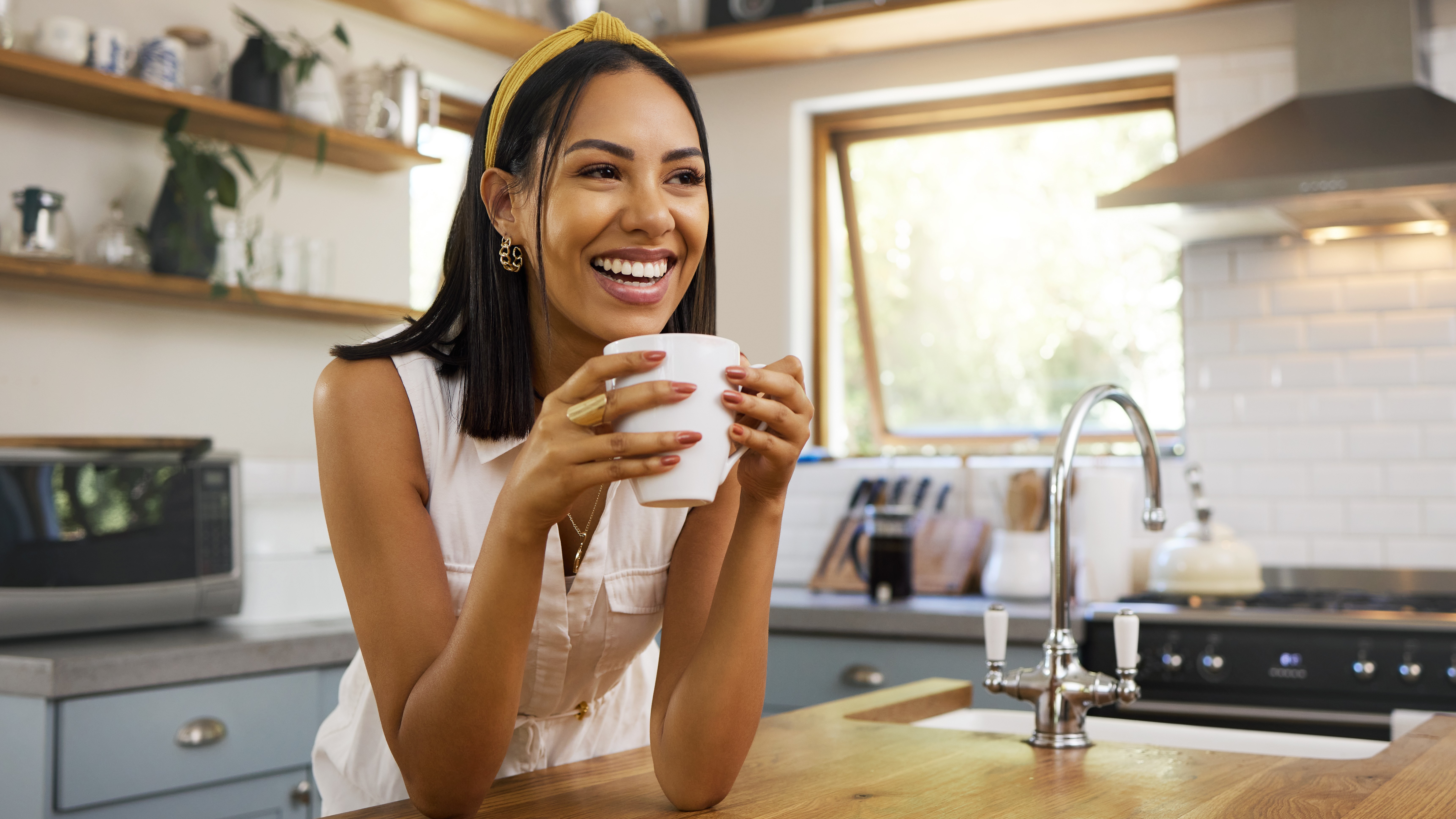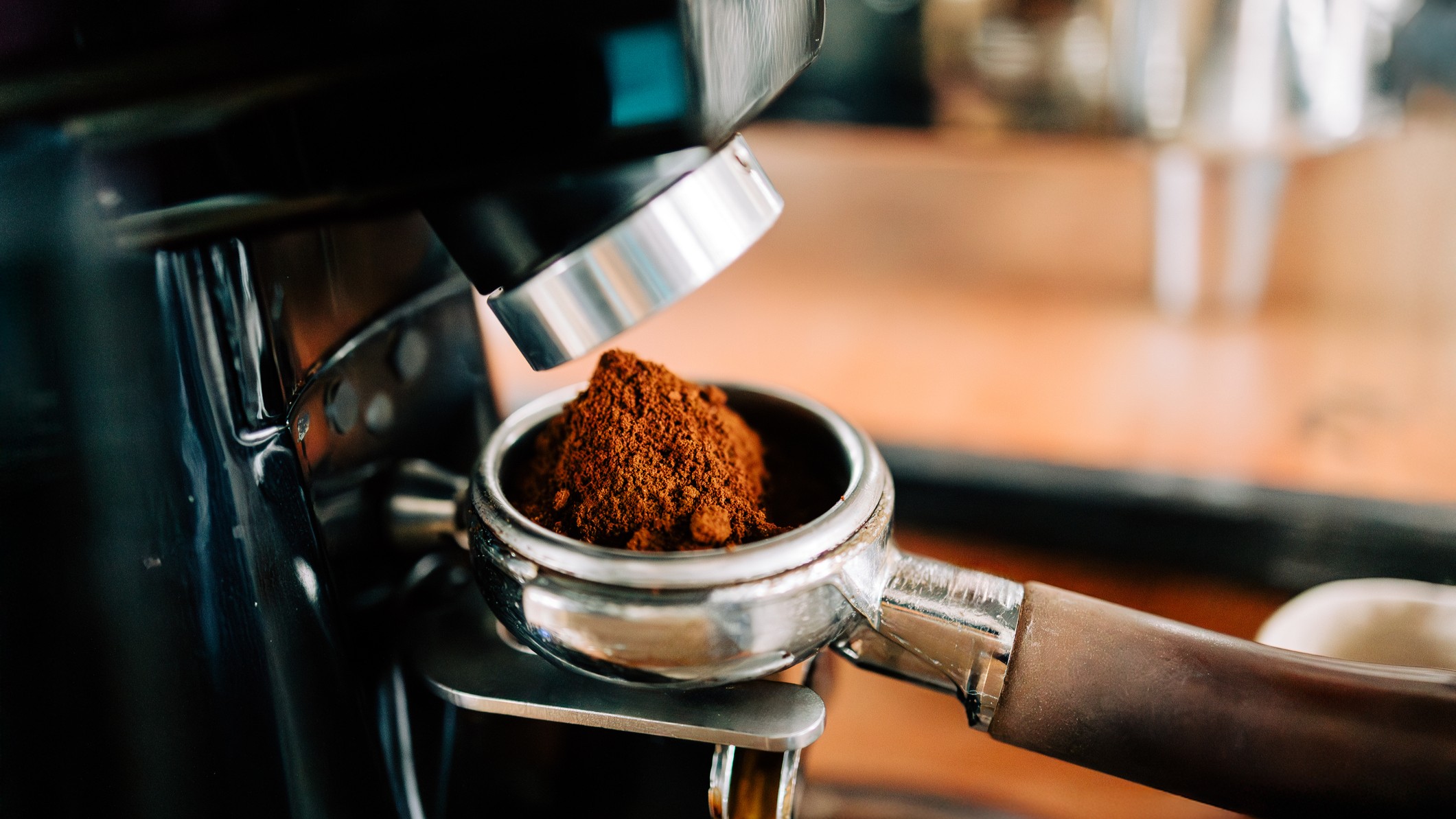6 ways to brew better coffee at home, according to a certified coffee grader – and the most common coffee myths busted

Thanks to improvements in home brewing equipment, it's never been easier to make delicious espresso and filter coffee at home. But having the best coffee maker for the job is only part of the equation. What else can you do to ensure you're getting the best possible flavor when making coffee at home, and are there any common myths that are holding us back from better brews?
To find out, I spoke to Stephanie Hoffman, who is the Director of Food Safety, Research and Development, and Quality Assessment at Bulletproof. Hoffman is a certified Q Grader, meaning she is professionally trained in the sensory evaluation of unroasted (aka green) coffee.
You might be familiar with the name Bulletproof. The company made its name through its ketogenic coffee, which is coffee combined with fats – specifically grass-fed butter or ghee, and MCT oil.
“We’re a better-for-you functional nutrition brand, focused heavily on coffee and coffee aficionados,” Hoffman explains. “It’s about how you add that nutrition into your daily routine, and using coffee as a vehicle to help do that.”
Roasting the coffee longer can mask some problems, or mask some of the complexity in the coffee
Stephanie Hoffman
After completing her bachelor’s degree in human nutrition and her master’s in food science, Hoffman began working in food manufacturing, from ingredients to finished products. She was even involved in pet food for a while, before finding Bulletproof online.
“It happened to align with a lot of my background,” she says. “It’s what I would call convenient nutrition – it’s very easy to adapt to your daily lifestyle.
“Coffee is a big part of what Bulletproof does, so I had the opportunity with Bulletproof to really dive into that. I got my Q-Grade certification last year, which opened up a whole new vocabulary for me in coffee. I went to South America and had a chance to meet the farmers. I really jumped into learning about coffee and became a coffee fanatic overnight.”
Sign up for breaking news, reviews, opinion, top tech deals, and more.
Busting coffee-making myths
Hoffman says that she often heard myths about dark-roasted coffee – that it’s superior, or that it has more caffeine – but the opposite is often true.
“Roasting the coffee longer can mask some problems, or mask some of the complexity in the coffee,” she says. ”Additional exposure to heat also means you’re losing caffeine.”
Make sure that you use the appropriate grind for the brewing method
Stephanie Hoffman
Another common myth involves the freshness of coffee.
"Once you roast it, that coffee starts to age,” Hoffman says. “Even though you’re freshly grinding it, that doesn’t mean it’s fresh. It might be tempting to buy coffee in bulk, but it’s better to buy it as you need it to keep it really fresh.”
Finally, bear in mind that expensive coffee isn’t necessarily better quality.
“Price depends on things like origin and farming practices. You might be dealing with an origin that’s hard to get to the US, so it’s higher cost but not necessarily higher quality.”
Make better coffee at home
When it comes to brewing better coffee at home, Hoffman says her single biggest tip is water quality.
“Coffee is 98% water, so it’s important that you have good filtered water. You don’t want to remove too much of the mineral content, but you don’t want hard water.
“Make sure you use hot water around 200F [93C] and the correct ratio of coffee to water – 1:16 to 1:18 depending on the style. Too much and the coffee will have a bitter taste; not enough and you’ll get a very light-tasting cup of coffee.”

Freshness is another factor to consider for getting the best results at home.
“Make sure that you are buying coffee more often, and typically using it within one to two weeks of when you buy it, so it’s not going stale,” Hoffman advises.
When it comes to grinding coffee, she recommends using a burr grinder rather than a blade grinder for more consistent results.
“Make sure that you use the appropriate grind for the brewing method,” she says. “For French press it should be coarser, pour-over should be medium, and for espresso it should be fine.
“You also want to pay attention to the coffee itself for the brew method. If you're doing a cold-brew, you would want to do a coarse grind. We’re working on a flavored coffee right now that has spices blended into the coffee rather than being a spray-on. For something like that, you want to do it with a French press so they’re not getting filtered out. For artisan coffee, you would be doing medium to fine.”
Want help picking the best coffee maker for your kitchen? Take a look at our list of the top 3 things to consider when buying a coffee machine, from a trained barista.
You might also like
- Breville's new espresso machine can brew coffee and steam milk at the same time – and it's eye-wateringly expensive
- I'm a trained barista, and these are the 3 best espresso machines I've tested so far this year
- Breville's new espresso machine can brew coffee and steam milk at the same time – and it's eye-wateringly expensive

Cat is TechRadar's Homes Editor specializing in kitchen appliances and smart home technology. She's been a tech journalist for 15 years, having worked on print magazines including PC Plus and PC Format, and is a Speciality Coffee Association (SCA) certified barista. Whether you want to invest in some smart lights or pick up a new espresso machine, she's the right person to help.
You must confirm your public display name before commenting
Please logout and then login again, you will then be prompted to enter your display name.